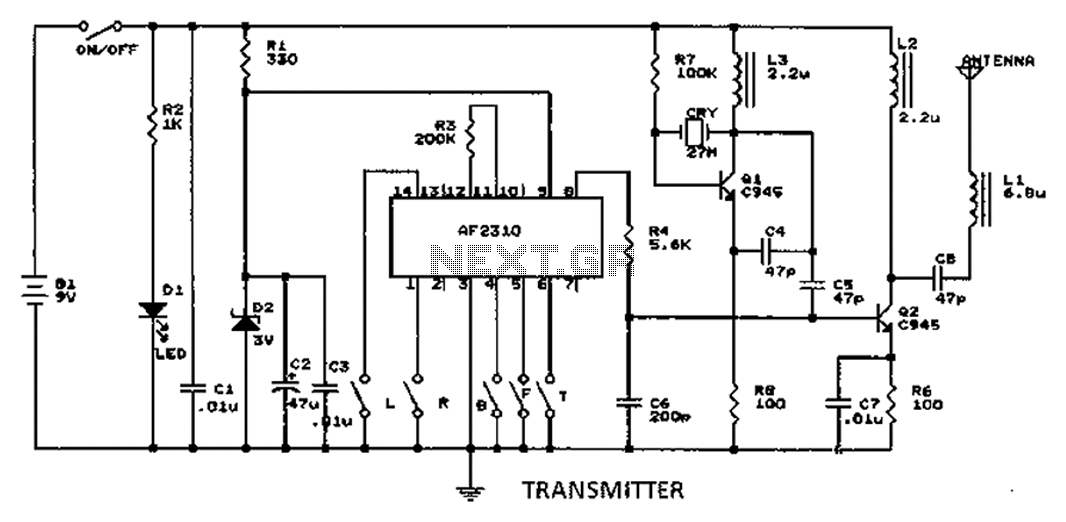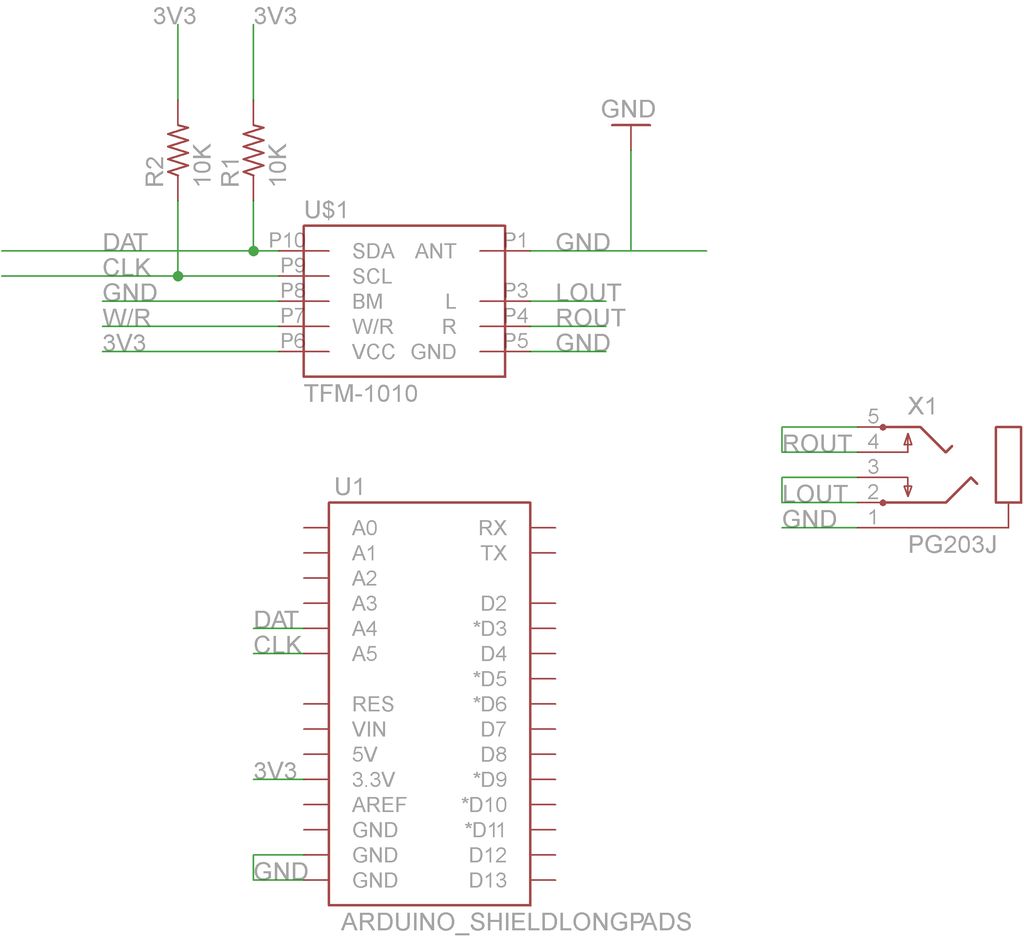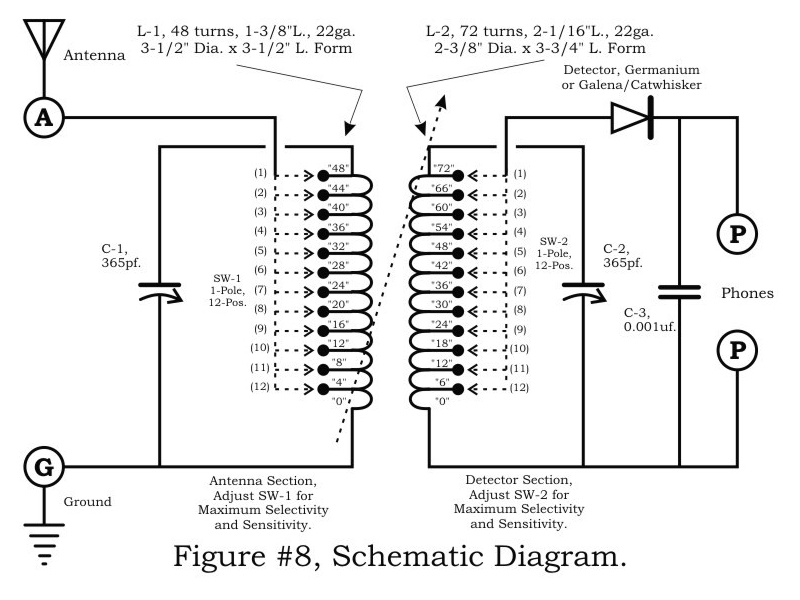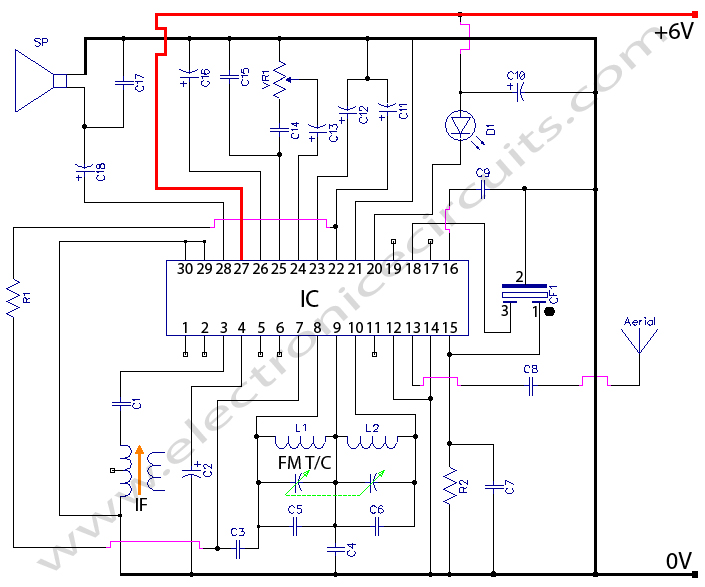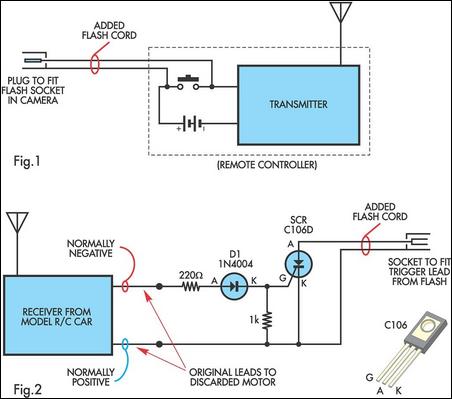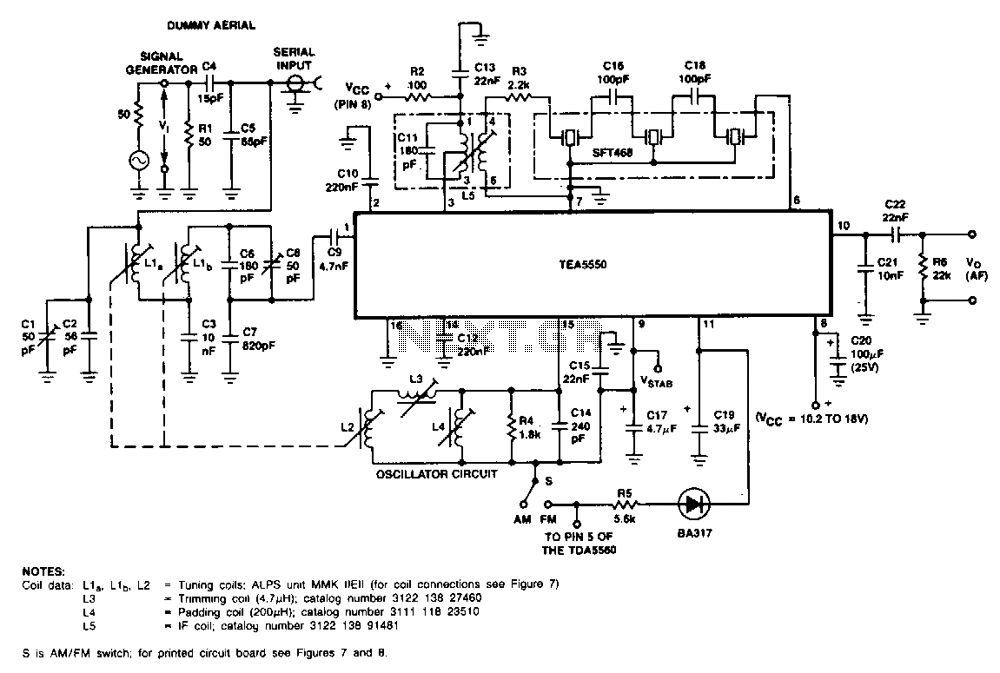
Radio Direction Finder
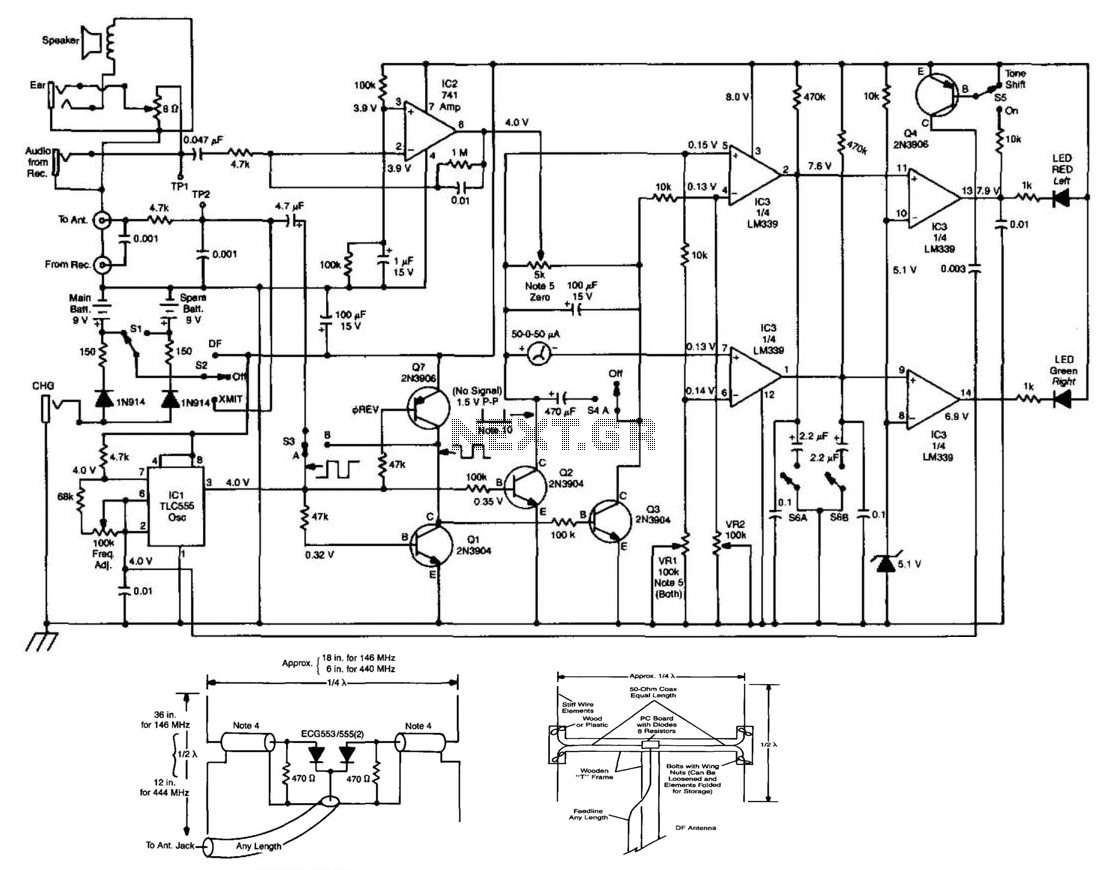
This RDF circuit consists of a square-wave oscillator (IC1), which switches two antennas alternately at an audio rate. A phase detector (Q1, Q2, Q3, Q7) is used to compare the receiver output amplified by IC2 with the reference phase from IC1. A 50-meter scale is employed as a left-right indicator. IC3 is a comparator used to drive indicator LEDs.
The RDF (Radio Direction Finding) circuit is designed to facilitate the detection of the direction of incoming radio signals by utilizing a square-wave oscillator (IC1). This oscillator generates a square wave that alternately switches two antennas, allowing for the evaluation of the strength of signals received from different directions at an audio frequency. The output from the antennas is fed into a phase detector consisting of transistors Q1, Q2, Q3, and Q7. This phase detector plays a critical role in comparing the amplified output from the receiver (amplified by IC2) with a reference phase generated by IC1.
The phase comparison yields a signal that indicates the relative phase difference between the incoming signal and the reference, which is essential for accurately determining the direction of the source of the radio waves. The results of this comparison are then translated into a visual indication using a 50-meter scale, which serves as a left-right indicator, allowing the user to discern the directionality of the signal effectively.
In conjunction with these components, IC3 functions as a comparator that drives indicator LEDs, providing a clear visual representation of the phase detection results. The LEDs illuminate based on the output from the phase detector, offering immediate feedback to the user regarding the direction of the incoming signal. This combination of oscillation, amplification, phase detection, and visual indication forms a comprehensive RDF circuit capable of accurately determining the direction of radio frequency sources. This RDF circuit consists of a square-wave oscillator (IC1), which switches two antennas alternately at an audio rat e. A phase detector (Ql, 2, 3, 7) is used to compare receiver output amplified by IC2 with the reference phase from IC2 with the reference phase from IC1. 50- meter is used as a left-right indicator. IC3 is a comparator used to drive indicator LEDs. 🔗 External reference
The RDF (Radio Direction Finding) circuit is designed to facilitate the detection of the direction of incoming radio signals by utilizing a square-wave oscillator (IC1). This oscillator generates a square wave that alternately switches two antennas, allowing for the evaluation of the strength of signals received from different directions at an audio frequency. The output from the antennas is fed into a phase detector consisting of transistors Q1, Q2, Q3, and Q7. This phase detector plays a critical role in comparing the amplified output from the receiver (amplified by IC2) with a reference phase generated by IC1.
The phase comparison yields a signal that indicates the relative phase difference between the incoming signal and the reference, which is essential for accurately determining the direction of the source of the radio waves. The results of this comparison are then translated into a visual indication using a 50-meter scale, which serves as a left-right indicator, allowing the user to discern the directionality of the signal effectively.
In conjunction with these components, IC3 functions as a comparator that drives indicator LEDs, providing a clear visual representation of the phase detection results. The LEDs illuminate based on the output from the phase detector, offering immediate feedback to the user regarding the direction of the incoming signal. This combination of oscillation, amplification, phase detection, and visual indication forms a comprehensive RDF circuit capable of accurately determining the direction of radio frequency sources. This RDF circuit consists of a square-wave oscillator (IC1), which switches two antennas alternately at an audio rat e. A phase detector (Ql, 2, 3, 7) is used to compare receiver output amplified by IC2 with the reference phase from IC2 with the reference phase from IC1. 50- meter is used as a left-right indicator. IC3 is a comparator used to drive indicator LEDs. 🔗 External reference
